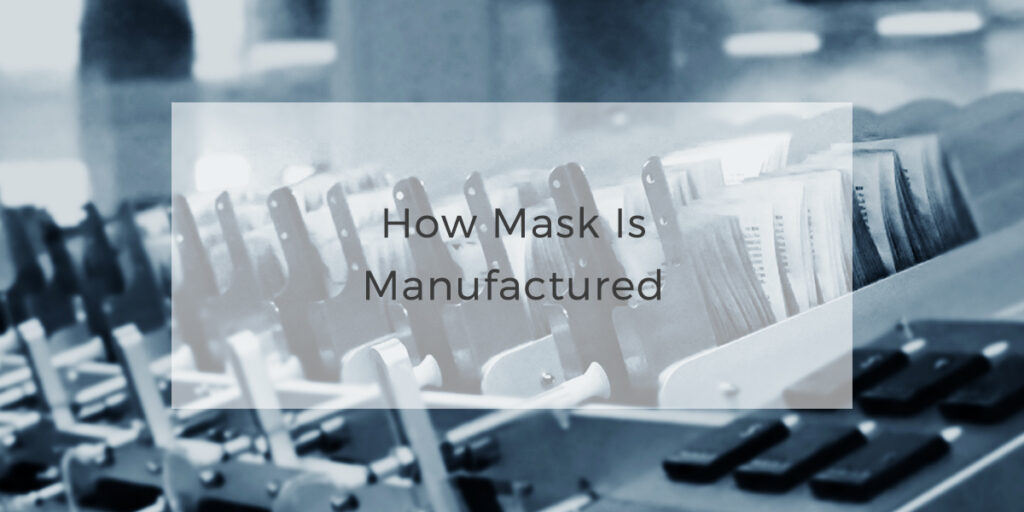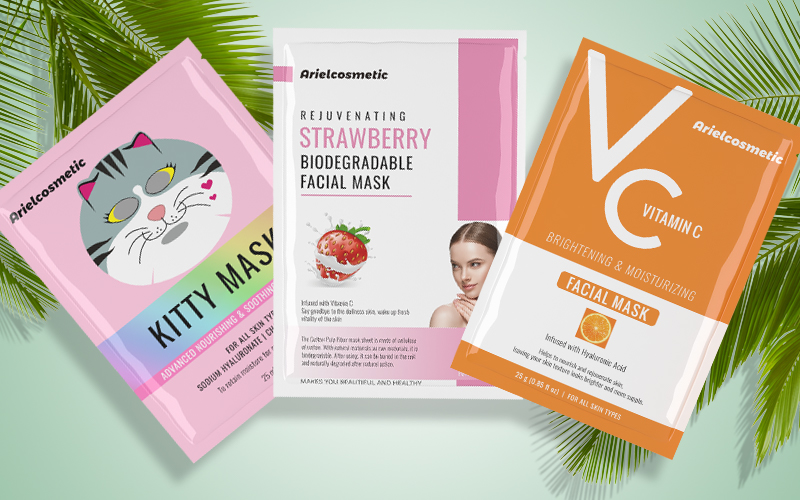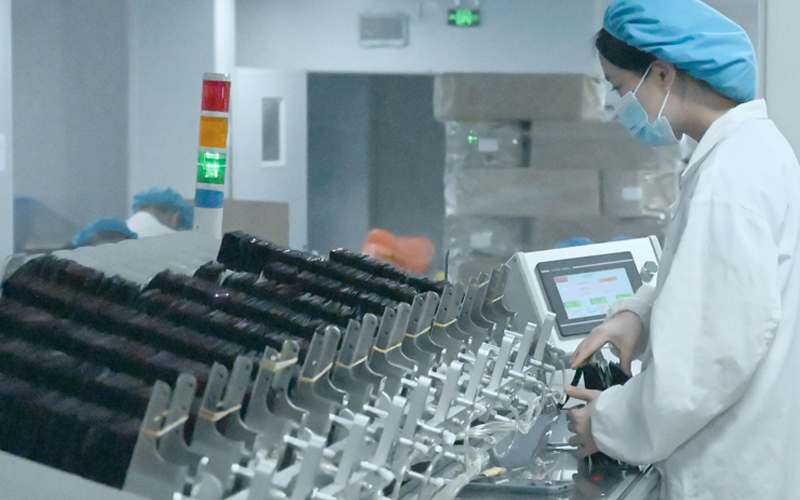The mask is a common cosmetic, and its manufacturing process generally includes the following steps:
Raw Material Preparation
The following types of raw materials are usually prepared before mask production:
Base materials: such as water, glycerin, propylene glycol, etc., as diluents and moisturizers for the mask’s base.
Membrane material: such as sodium alginate, hydroxypropyl methylcellulose, etc., is used to form the film structure of the mask.
Functional raw materials: such as vitamin C, hyaluronic acid, collagen, etc., provide various functions of the mask, such as whitening, moisturizing, anti-wrinkle, etc.
Auxiliary raw materials: such as emulsifiers, stabilizers, preservatives, etc., are used to adjust the texture, stability, and antiseptic shelf life of the mask.
Fragrances and pigments: such as lavender essential oil, citric acid, etc., are used to increase the aroma and color of the mask.
Note: Before the production of the mask, it is necessary to prepare the above various raw materials according to the product formula and strictly control their quality and proportion to ensure the effect and stability of the mask. At the same time, selecting a suitable supplier is necessary to ensure the reliability and safety of raw material sources.
Mix and Stir
Mixing and stirring the mask is a crucial step in production. Its purpose is to mix various raw materials evenly to form a stable mask emulsion. The specific steps of mixing and stirring are as follows:
Prepare various raw materials: According to the product formula, prepare various raw materials required according to a certain proportion.
Adding basic materials: Add basic materials such as water, glycerin, propylene glycol, etc., into the mixing mixer according to a certain proportion.
Add membrane materials and functional raw materials: Add membrane materials such as sodium alginate, hydroxypropyl methylcellulose, etc., and functional raw materials such as vitamin C, hyaluronic acid, collagen, etc. into the mixing mixer in a particular proportion.
Add auxiliary raw materials: add emulsifiers, stabilizers, preservatives, and other auxiliary raw materials into the mixer according to a certain proportion to adjust the texture, stability, and antiseptic shelf life of the mask.
Stir well: start the mixing mixer, and mix all raw materials until a stable mask emulsion is formed.
Other additives: According to needs, other ingredients can be added to the lotion, such as fragrance, pigment, humectant, antioxidant, etc.
Note: During the mixing and stirring process, attention needs to be paid to maintaining the mixer’s stability and temperature control to ensure the mask emulsion’s quality and stability. At the same time, it is also necessary to adjust the mixing time, speed, and other parameters according to the specific product requirements to ensure that the effect and quality of the product meet the standard requirements.
Standing & Testing
The standing and testing of the mask is a vital link in the mask production process. The following is some basic information:
Standing: The mask needs to be left for a certain period during the production process so that the ingredients in the mask liquid can be thoroughly mixed.
Testing: Raw materials and finished products need to be tested during the mask production process to ensure that the quality of the mask meets the standards. The items tested include mask ingredients, PH value, stability, microbial indicators, etc.
The process of standing and testing: Generally speaking, the production workshop will pour the mask liquid into the container for standing and testing during the sanding process. The masking fluid must be adjusted or re-produced if the test results do not meet the standards. The resting time and detection process can be adjusted according to the manufacturer’s requirements.
Note: During the production of facial masks, attention should be paid to the quality of raw materials, hygiene, and cleanliness during the production process. At the same time, the process of standing and testing also needs to be carried out in a clean environment to avoid the impact of external pollution on the quality of the mask.
Filling & Packaging
The canning and packaging of facial masks is the last facial mask production process. It is also a vital link to ensure the quality and aesthetics of facial mask products. Here is some basic information:
Canning: The canning of the mask will use the automatic mask machine equipment, which can ensure the accuracy of the canning capacity, and its speed can reach the output of 7000 pieces per hour.
Packaging: The packaging mask is generally packed in various bags or boxes to protect the integrity and aesthetics of the mask. Packaging materials must comply with relevant food hygiene and safety standards and ensure no pollution or peculiar smell.
Quality inspection: Quality inspection is required after the mask canning and packaging are completed, mainly including visual inspection, airtightness inspection, packaging integrity inspection, etc. Ensure that the product meets the standard requirements.
Storage and transportation: During the storage and transportation of mask products, attention should be paid to moisture-proof, sun-proof, and drop-proof to avoid affecting product quality. At the same time, it needs to be stored and transported under standard temperature and humidity conditions.
Note: The canning and packaging of the mask are vital links to ensure the quality and aesthetics of the mask product. It is necessary to pay attention to the selection of packaging materials that meet the standards, conduct strict quality inspections, and pay attention to related issues during storage and transportation to ensure product quality and safety.
Finished Products Inspection
The finished product inspection of the mask is vital to ensure the quality of mask products, mainly to test whether the mask products meet the relevant national standards and the company’s own quality standards. The following are some every day finished product testing items:
Appearance inspection: Check whether the appearance of the mask product meets the requirements, such as whether the packaging is intact, whether the mask’s shape is regular, whether the color is uniform, etc.
Physical property testing: test the physical properties of mask products, such as mask thickness, tensile strength, elongation, etc., to evaluate the performance of the mask.
Chemical component detection: Detect the content and composition of chemical components in mask products, such as moisture content, active ingredient content, preservative content, etc.
Microbial detection: Detect the content and types of microorganisms in facial mask products to ensure the hygiene and safety of facial masks.
Sensory evaluation: Conduct sensory evaluation on mask products, including smell, color, texture, etc., to evaluate the overall feeling of the mask.
Note: The finished product inspection of the mask needs to cover all aspects of the mask product, and the test results need to meet the relevant national standards and the company’s quality standards to ensure the quality and safety of the mask product.
Summary
The production process of different types of skin care masks may be slightly different but generally includes the above steps. In addition, a series of quality control and testing is required during the production of skin care masks to ensure the safety and effectiveness of the products.



